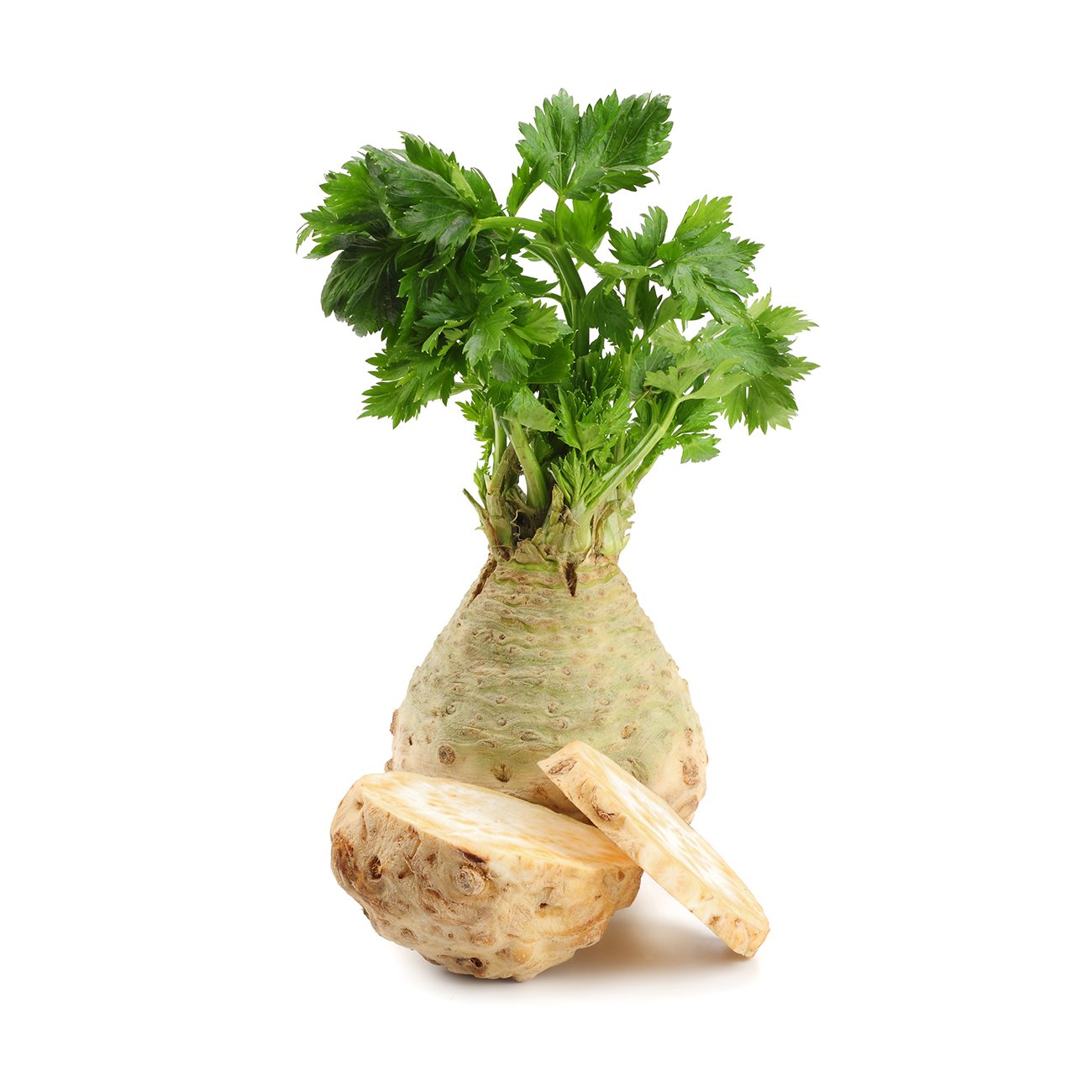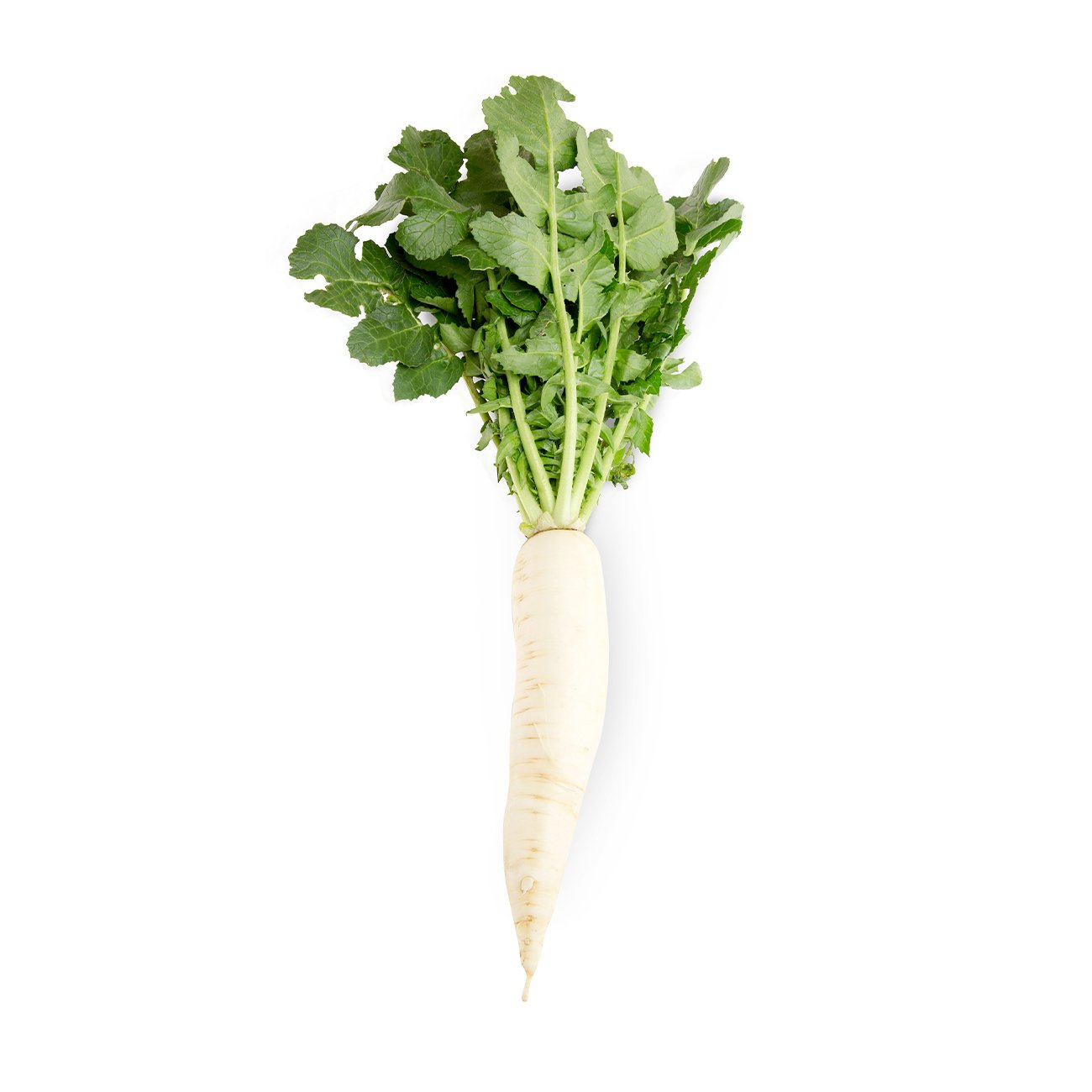Celery is a crisp green vegetable with long stems and green leafy ends. Both the stems and leaves are edible. The leaves are strongly flavoured and should be used when young—they add wonderful flavour and colour to salads. The stems can be eaten raw or cooked, adding a depth of flavour to stocks, sauces and soups.
-
Harvesting
High quality celery consists of stalks which are well formed, have thick petioles, are compact, have minimal petiole twisting, and have a light green and fresh appearance. Additional quality indices are stalk and midrib length, freedom from defects such as blackheart, pithy petioles, seedstalks, cracks or splits, and freedom from insect damage and decay.Postharvest storage temperature
At optimum conditions (0°C), celery should keep its quality after storage up to 5–7 weeks. Commonly, it is rapidly pre-cooled and then stored at 0–2°C. Some continued growth of inner stalks will occur postharvest at temperatures >0°C. Freezing injury will be initiated at -0.5°C. Symptoms include a water-soaked appearance on thawing and wilted leaves. Mild freezing causes pitting or short streaks in the petiole which develop a brown discolouration with additional storage.Controlled atmosphere storage
Controlled or modified atmospheres offer moderate benefit. Delayed senescence and decay development have been observed at 2–4% O2 and 3–5% CO2. However, injury from low O2 (< 2%) or elevated CO2 (>10%) will induce off-odours, off-flavours and internal leaf browning.Ethylene sensitivity
Celery is not very sensitive to ethylene at low levels and low temperatures. Loss of green colour can result from exposure to 10ppm or higher ethylene concentrations at above 5°C.Humidity storage
Optimum relative humidity for storage is 98–100% relative humidity.Disease & infection
Diseases are an important source of postharvest loss, particularly in combination with rough handling and poor temperature control. The major bacterial and fungal pathogens that cause this are bacterial soft rot, grey mould and watery rot. Cut petioles of celery are very prone to bacterial decay. Less and delayed symptoms will result from the use of sharp blades, minimising abrasions or other damage to cut-ends during packaging, and good sanitation. -
Do not peel. Trim then submerge in water and refrigerate.
Nutrition information
| Qty per serve | % RDI per serve | Qty per 100g | |
|---|---|---|---|
| Energy | 48 kJ | 1% | 64 kJ |
| Protein | 0.5 g | 1% | 0.6 g |
| Fat, total | 0.1 g | 0% | 0.1 g |
| – saturated | 0 g | 0% | 0 g |
| Carbohydrate | 1.7 g | 1% | 2.3 g |
| – sugars | 0.9 g | 1% | 1.2 g |
| Dietary fibre, total | 1.1 g | 4% | 1.5 g |
| Sodium | 72 mg | 3% | 97 mg |
| Vitamin K | 22 µg | 27% ESADDI | 29 µg |
| Potassium | 200 mg | - | 267 mg |
Note: % RDI are based on an average adult diet of 8700 kJ. Your daily intakes may be higher or lower depending on your energy needs. RDI = Recommended Dietary Intake; ESADDI = Estimated Safe and Adequate Daily Dietary Intake.

You might also like
Veggy tip
You can revive wilted celery by cutting 2–3cm from the ends and standing in a glass of water for 30 minutes.



